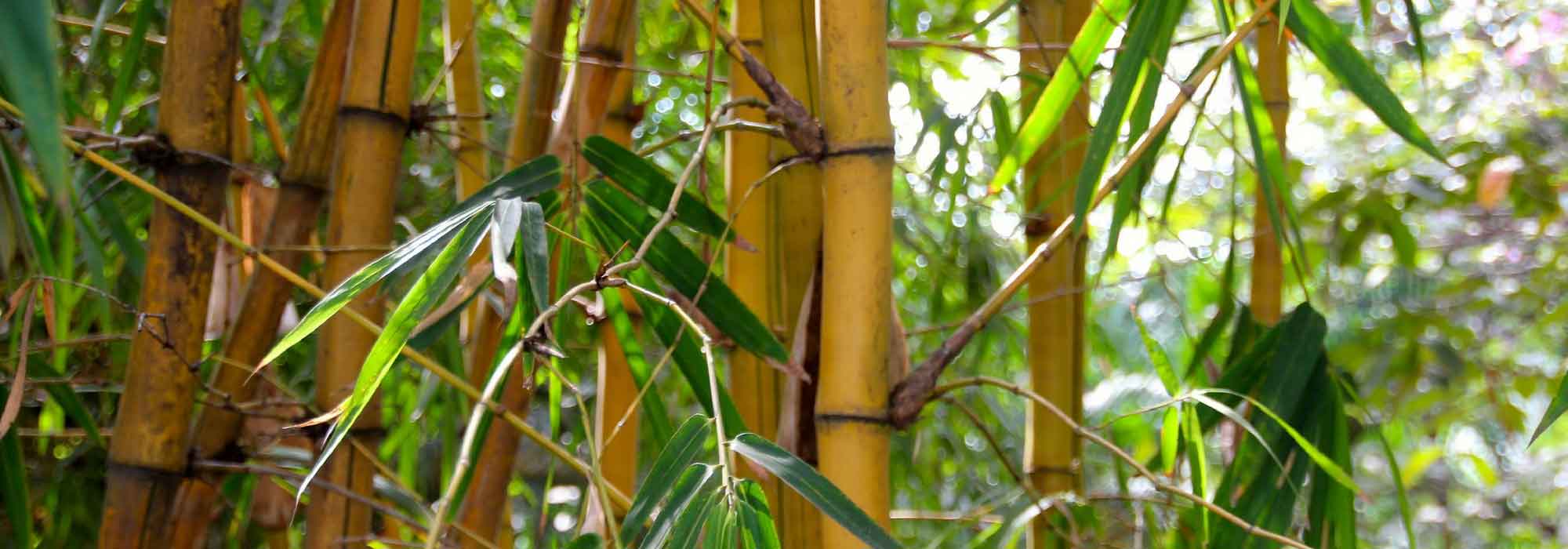
Bamboo: a successful planting in 4 steps
Where, when, and how to plant it?
Contents
Bamboo plantation is a key step. When carried out under the recommended growing conditions, it ensures the successful establishment and development of the bamboo. Whether it is running like Phyllostachys or non-running (cespitose) like Fargesia, it lends itself to multiple uses; as a solitary clump, grouped in an exotic grove, as a free or trimmed hedge, or as a privacy screen keeping you sheltered from prying eyes, as well as in large pots on the balcony or terrace.
Bamboo in pots, dwarf or giant, it brings a structuring verticality and a Japanese and exotic touch to all gardens. Highly hardy, bamboo thrives in light, neutral or acidic soils, fresh but well-drained where it grows very quickly in shade or sun, sheltered from cold winds.
Follow our planting tips to have beautiful bamboos!
Where to plant?
With its graphic and evergreen foliage, its colourful canes or culms, bamboo integrates into all gardens whether they are exotic, zen or contemporary. It can be used in borders, as a hedge, an effective screen, or as a standalone feature or in a pot on a terrace.
Vigorous, it grows everywhere in France. While it enjoys warmth, it fears drying exposures and is wary of overly dry soils in summer. Endowed with very good hardiness, it is not afraid of the cold, resists frost and can withstand temperatures sometimes dropping to -20 °C. Some subtropical species (notably the Bambusa) have lower hardiness in cold climates and should be reserved for conservatories or milder regions.
Although bamboo grows quickly in any good garden soil, the quality and moisture content of the soil nonetheless condition its growth. It needs moisture in summer, warmth and very fertile soil : it will spread rapidly under these growing conditions. It prefers an acid or neutral, rich, light soil, without excessive lime.
Apart from a few species that thrive in waterlogged soils (Phyllostachys atrovaginata ‘Green Perfume’), bamboo will establish itself less quickly in poor or dry soil. It likes cool ground where water never stagnates for long periods, especially in winter: waterlogged soil for several weeks would lead to fatal rot.
Before planting, think carefully about the planting and the space you wish to allocate to your bamboo. Most bamboos reach their maximum size in a few years, in 4 or 5 years. Running bamboos quickly become invasive. You can limit their spread by defining their space right from planting with an anti-rhizome barrier, a type of thick, durable polypropylene film. Running bamboos, like the Phyllostachys, are imposing, reaching nearly 10 metres in height. Provide them with a space to their measure!
Plant the largest and most architectural varieties (Phyllostachys bambusoides, Phyllostachys vivax, Phyllostachys edulis…) at the back of the bed, in a hedge or to create exotic, disorienting groves.
Fortunately, there are non-running (cespitose) bamboos that are just as decorative, perfect for small gardens or large containers. Their development does not require the installation of a barrier.
Dwarf bamboos generally do not exceed 1.5 m and will form luxuriant ground covers at the edge of a flowerbed or on a slope. They also grow perfectly well in pots.
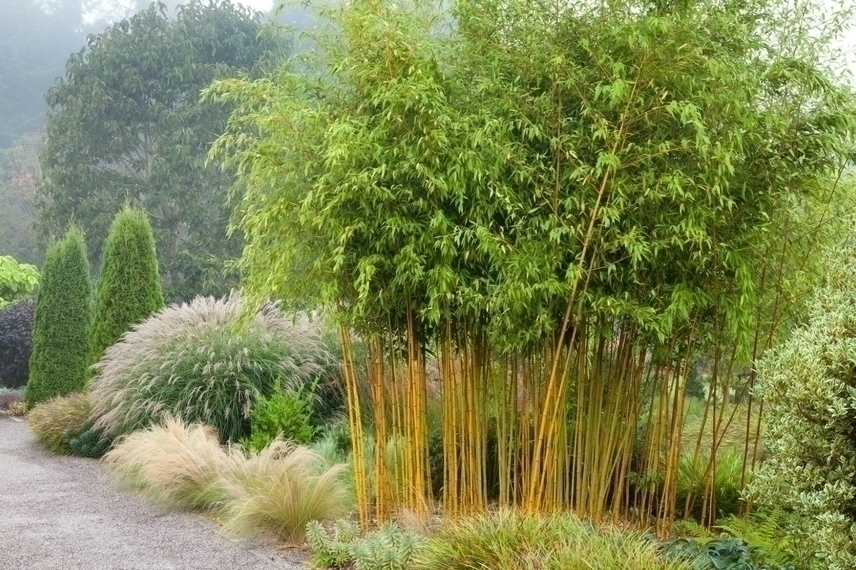
Phyllostachys aureosulcata ‘Aureocaulis’ in the foreground alongside Miscanthus sinensis and Stipa tenuifolia (Copyright: Richard Bloom/ GAP Photos)
Read also
How to divide and multiply your bamboos?When to plant bamboo?
Container-grown bamboos can be planted all year round, except during frost periods. Planting is ideally done after the intense heat, which will encourage its establishment, at the end of summer and during autumn, from late August to October. Planting is possible in early spring, specifically March and April in the northern regions of the Loire or between September and November in the southern regions of France. In any case, it should be done after the last frosts or after the intense heat.
Discover other Bamboos
View all →Available in 2 sizes
Available in 3 sizes
Available in 3 sizes
Available in 1 sizes
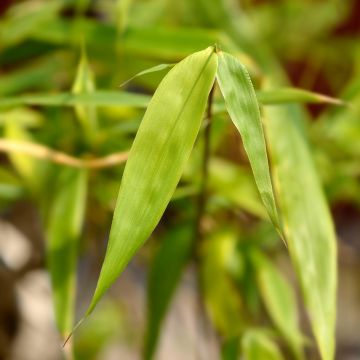
Available in 3 sizes
Available in 2 sizes
Available in 1 sizes
Available in 2 sizes
Available in 1 sizes
Available in 1 sizes
How to plant?
Bamboo requires plenty of water to establish and grow. Water generously at planting and then very regularly during the first two years of cultivation, especially in summer and when the soil is very dry. Apply a mulch to keep the soil cool.
In the ground
Avoid areas where water stagnates as well as overly calcareous soils.
Give it the necessary space
- For running or fast-growing varieties, take the adult height and multiply by 3 to obtain the adequate surface area needed for it to thrive. For example: for a Phyllostachys bissetii that will reach about 6 metres in height, an ideal surface area of 18 m² should be considered. However, you can plant closer together but still allow a spacing of at least 1.5 m to 2 m in all directions with other plants.
- For non-running species, maintain a planting distance of 60 cm to 1 m depending on growth.
- Space dwarf bamboo plants at least 30 to 50 cm apart.
Pamper the soil
- Soak the root ball in a bucket of water to rehydrate it.
- Dig a hole 40 cm deep and 60 cm wide with a spade.
- For running bamboos, plan to install a rhizome barrier, see details below in chapter 4.
- Place the root ball in the centre of the hole and backfill with the excavated garden soil, adding a good planting compost (special planting compost), well-decomposed compost, or manure. You can add roasted horn to nourish it deeply.
- To keep the soil moist and cool, spread an organic mulch of wood chips or pine bark to a thickness of 6 to 8 cm.
- Subsequently, the fallen dry leaves will form a natural mulch at the base of the bamboos.
- Water regularly during the summer period and especially in case of drought.
In pots
Bamboos tolerate pot cultivation very well as long as you carefully monitor watering. Choose your species wisely (some too vigorous could quickly break the pot) and favour bamboos with little or no running rhizomes or cespitose and small growth. Provide them with a sunny spot that is not scorching and sheltered from drafts. Potted bamboos must never lack water; monitor watering closely, especially during prolonged dry spells.
- Choose a large container of about forty litres (at least 50 cm in diameter and depth).
- Make a bed of gravel or clay balls at the bottom of the pot.
- Fill with a rich, very draining mix of compost, compost, and good garden soil.
- Water regularly.
- Spread a mulch to retain moisture.
In hedges
- Water the root ball before potting out.
- Dig a trench at least 50 cm deep.
- Install a rhizome barrier for running bamboos.
- Add compost to the bottom of the hole, then place the root balls while respecting the appropriate planting distance. Allow 50 cm to 1 m spacing between your bamboos depending on the varieties.
- Backfill the trench and compact the soil.
- Water generously.
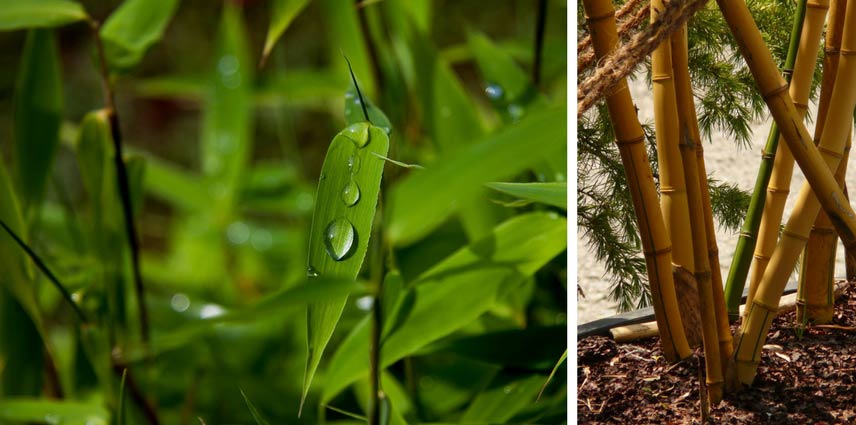
Watering should be monitored at least during the first year in the ground and continuously if your bamboos are grown in pots.
Read also
Bamboos: plant, pruning, maintainHow to install a rootstock barrier?
A root barrier is essential for running bamboo species that have a natural tendency to quickly colonise large areas due to their rootstock, extending several metres around their original plant. Without this precaution, unwanted culm shoots will invade short grass meadow, paths, and the neighbour’s garden… Fortunately, there are simple solutions to contain these overflows. The root barrier comes in the form of a thick PVC film packaged in a roll. You will need to bury it vertically, leaving a minimum height of 5 cm above ground to prevent the rootstocks from spreading at ground level, whether in a trench for a hedge planting or in a planting hole.
- In the planting hole or trench, unroll the roll
- Join the two ends without leaving any gaps between the joints, overlap them if it is a circular hole, otherwise unroll along the entire length of the trench
- Position the barrier at a 15° angle towards the plant
- Backfill the planting trench with the excavated soil, compacting it well
- Optionally, cover the rather unsightly film protruding from the ground with mulch.
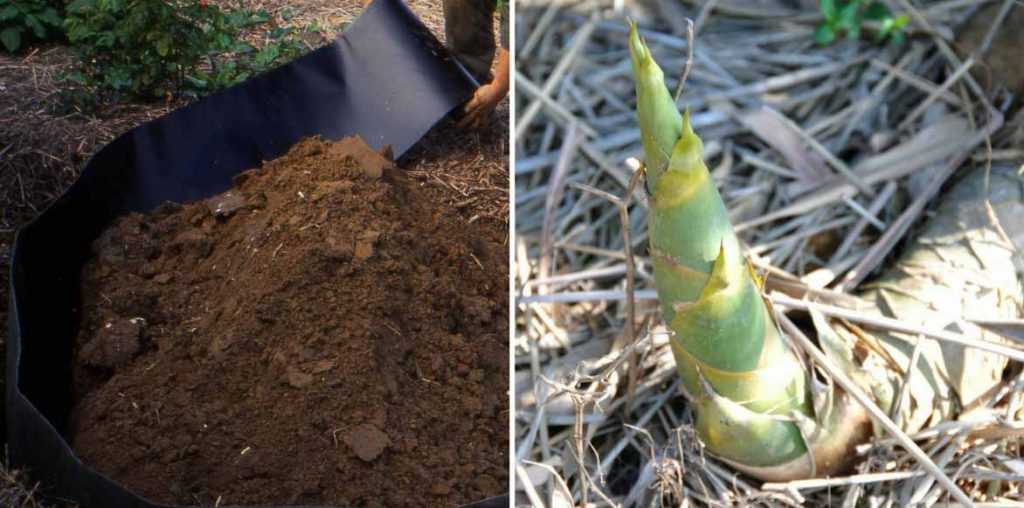
Installing a root barrier helps prevent the emergence of young bamboo shoots outside the designated area.
- Subscribe!
- Contents































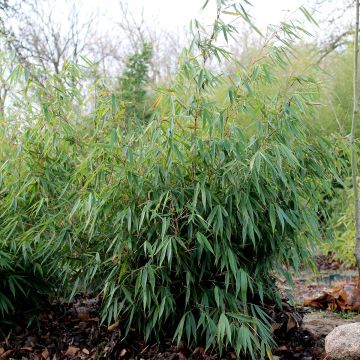
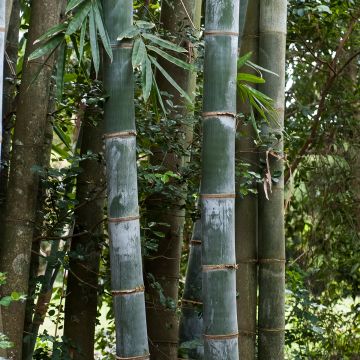
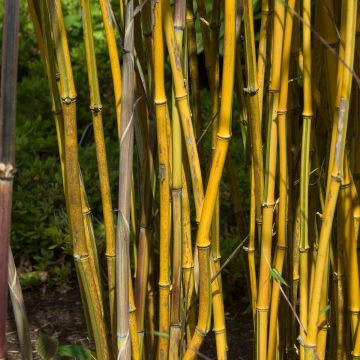




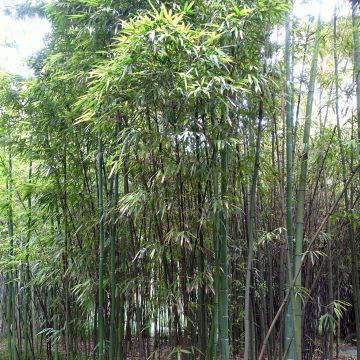

Comments